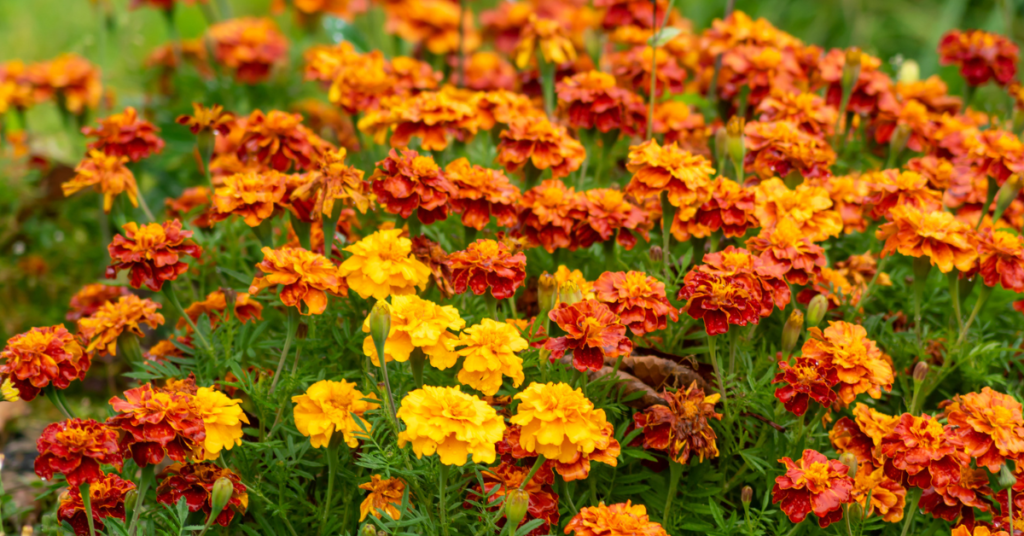Marigolds are a popular and versatile flower that can add color and interest to any garden or landscape.
They are easy to grow, low maintenance, and come in various colors and sizes. Marigolds have been used for centuries for their medicinal and culinary properties and are often used as a natural insect repellent.
Today, we will explore the different types of marigolds, how to plant and grow them, when they bloom, and how to encourage and maintain their blooms.
Types of Marigolds
There are several types of marigolds to choose from, each with unique characteristics.
French marigolds (Tagetes patula)
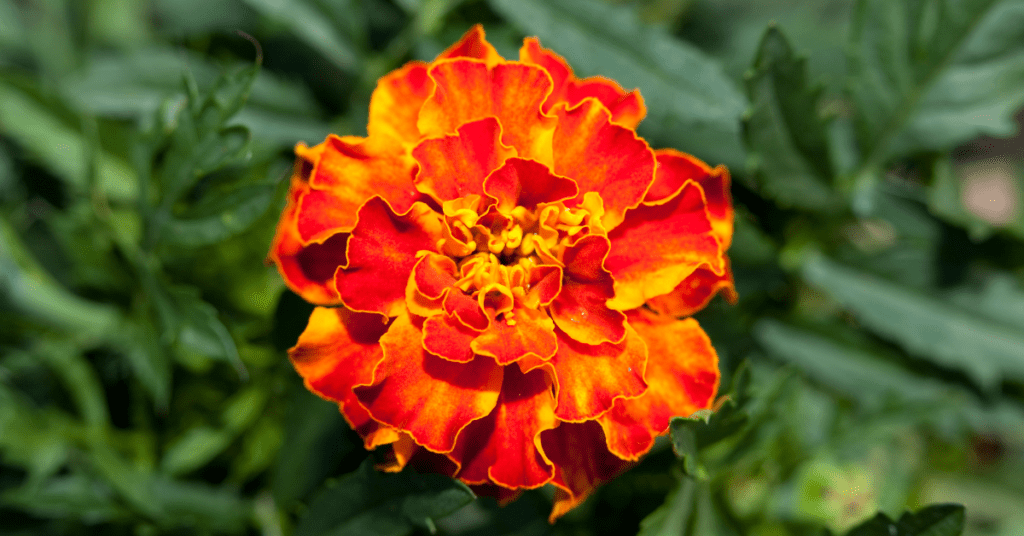
They are small, bushy plants that are often grown as annuals. They come in various colors, including yellow, orange, and red, and are known for their distinctive, spicy fragrance.
French marigolds (Tagetes patula) are a popular garden plant native to Mexico and Central America.
They are often grown for their bright, cheerful blooms and ability to repel pests, making them a valuable addition to any garden or landscape.
Growing conditions
French marigolds prefer well-draining soil and full sun, although they can tolerate some shade. They also require regular watering, especially during hot, dry weather.
Planting
French marigolds can be grown from seed or transplants. If starting from seed, sow them directly into the garden bed after the last frost or start them indoors 4-6 weeks before planting outside.
Transplants can be planted outdoors once the soil has warmed up and all danger of frost has passed.
Care
French marigolds are relatively low-maintenance plants, but they benefit from deadheading (removing spent flowers) to encourage continuous blooming.
They also benefit from regular fertilization with a balanced fertilizer.
Pests and diseases
French marigolds are relatively resistant to pests and diseases but can be susceptible to spider mites, aphids, and whiteflies.
They are also prone to fungal diseases in humid conditions, so be sure to space plants out and water the base of the plant to avoid wetting the foliage.
Uses
French marigolds are often used in bedding displays, borders, and containers.
They can also be used as companion plants to deter pests such as nematodes and whiteflies.
Additionally, the flowers of French marigolds are edible and can be used to add color and flavor to salads.
Varieties
Wide varieties of French marigolds range in height, flower color, and petal shape. Some popular types include ‘Durango,’ ‘Bonanza,’ and ‘Sparky.’
African marigolds (Tagetes erecta)
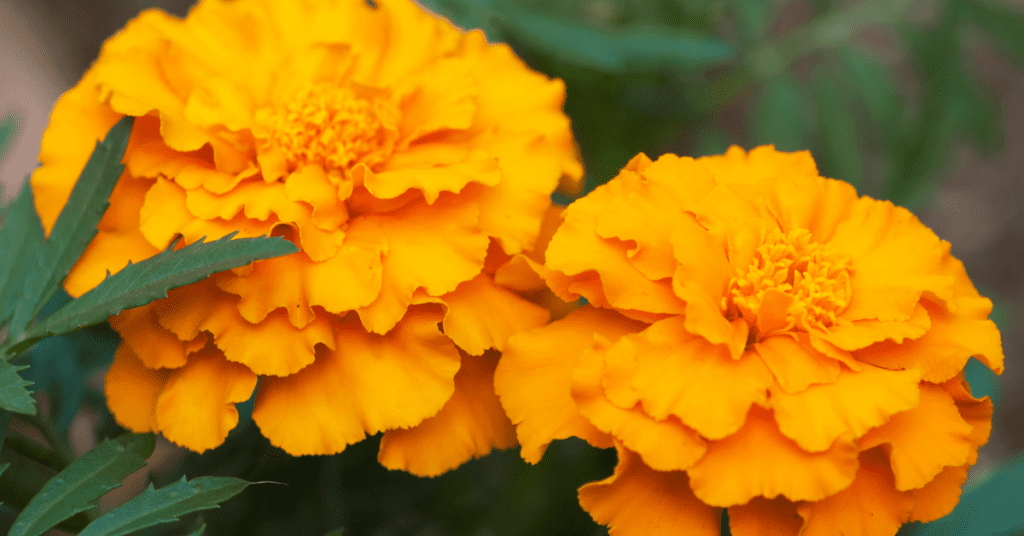
They are taller and more upright than French marigolds, with larger flowers and a longer bloom time. They are often grown as annuals but can sometimes be perennial in warmer climates.
African marigolds, also known as Tagetes erecta, are popular annual plants grown for their large, showy flowers.
If you are planning to grow African marigolds, here are some essential things you need to know:
Climate and Soil Requirements
African marigolds prefer warm weather and well-draining soil with a pH between 6.0 and 7.5. They grow best in full sun and can tolerate a wide range of temperatures, but they do not tolerate frost.
Planting and Care
African marigolds can be grown from seed or seedlings, and they should be planted in the spring after the last frost.
The seeds should be planted 1/4 inch deep in the soil and spaced 6 to 9 inches apart.
The plants should be watered regularly and fertilized with a balanced fertilizer every two weeks.
Watering
African marigolds require regular watering, but they do not tolerate wet soil.
It is essential to water them deeply and then allow the soil to dry out slightly before watering again.
Pests and Diseases
African marigolds are relatively pest and disease resistant, but they can be susceptible to spider mites and aphids.
To prevent these pests, keep the plants well-watered and avoid overcrowding. If problems do appear, treat them with insecticidal soap.
Harvesting
African marigolds can be harvested when the flowers are fully open, and the petals are flat. Cut the flowers early in the morning and remove any leaves below the water level. African marigolds can last up to a week in a vase with fresh water.
Uses
African marigolds are commonly used for decorative purposes, such as in floral arrangements, but they also have medicinal properties. For example, flowers and leaves can treat digestive disorders, respiratory infections, and skin problems.
Signet marigolds (Tagetes tenuifolia)
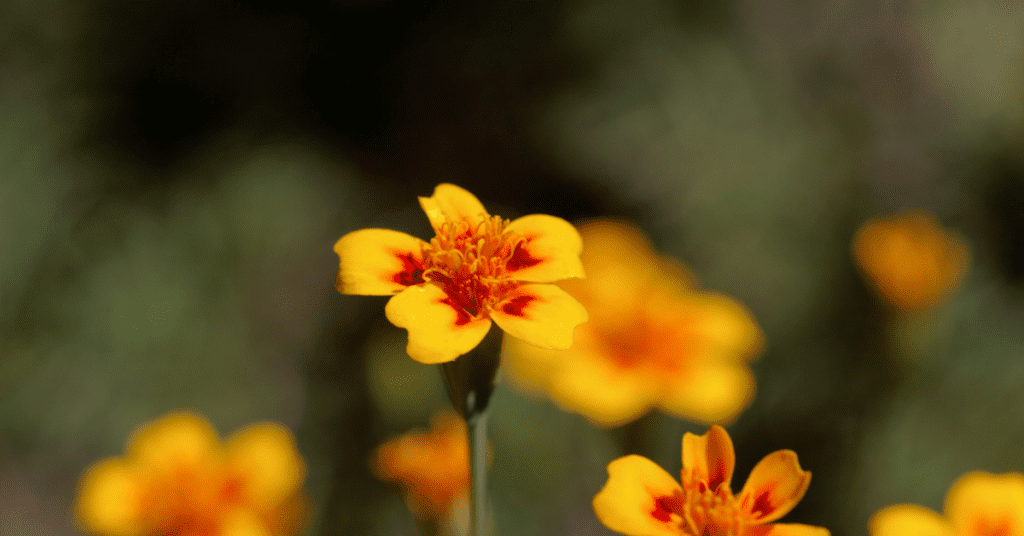
Signet marigolds are low-growing, spreading plants with small, bright flowers and feathery foliage. They are often grown as edging or ground cover plants.
Signet marigolds, also known as Tagetes tenuifolia, are popular flowering plants prized for their bright and cheery blooms and their easy-to-care-for nature.
Here are some key details that a grower should know about Signet marigolds:
Growing conditions
Signet marigolds prefer full sun to partial shade and thrive in well-draining soil. They tolerate a range of soil types but do best in slightly acidic to neutral soil.
These plants are drought-tolerant but benefit from occasional watering during prolonged dry spells.
Planting
Signet marigolds can be planted directly in the ground or containers.
They should be planted in spring after the danger of frost has passed.
Seeds should be sown about 1/4 inch deep and 6-8 inches apart. Germination usually occurs within 5-7 days.
Care
Once established, Signet marigolds require minimal care. Deadheading spent flowers will encourage more blooms.
Fertilization is generally unnecessary, but a light fertilizer application in early spring can be beneficial.
These plants are also relatively pest-resistant but may occasionally be bothered by aphids, spider mites, or whiteflies.
Varieties
Signet marigolds come in various colors, including yellow, gold, orange, and mahogany. Some popular varieties include ‘Lemon Gem,’ ‘Tangerine Gem,’ and ‘Starfire Mix.’
Uses
Signet marigolds are a popular choice for borders, rock gardens, and containers. They are also edible, with a slightly citrusy flavor, and can be used to add color and flavor to salads, soups, and other dishes.
Marigold Planting and Growing Conditions
Marigolds are easy to grow and can be planted directly in the ground or containers.
They prefer full sun and well-draining soil and do not require rich soil or frequent fertilization.
Marigolds can be started from seed or purchased as seedlings from a nursery or garden center.
To plant marigold seeds, sow them directly in the garden after the danger of frost has passed, or start them indoors 4-6 weeks before the last frost date.
Marigolds can be grown in various climates but may require extra watering in hot, dry weather.
When do Marigolds Bloom?
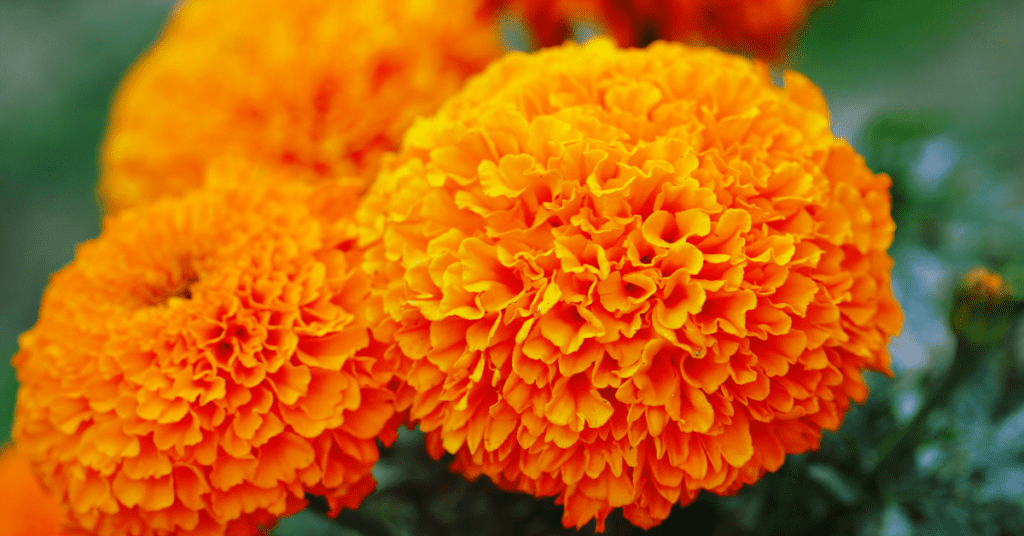
Marigolds typically bloom in mid-summer to early fall, depending on the variety and growing conditions. French marigolds usually begin blooming in early summer and continue until the first frost.
African marigolds may take longer to bloom but will continue until late fall in warm climates. Signet marigolds bloom throughout the summer and fall with a profusion of small, bright flowers.
Factors that Affect Marigold Bloom Time
Several factors can affect the bloom time of marigolds, including temperature, sunlight, watering, and soil conditions.
Marigolds prefer warm temperatures and may not bloom well in cool or excessively hot weather. They also require full sun to bloom, so planting them in a shady or partially shaded location can delay or reduce blooming.
Overwatering or underwatering can also affect bloom time, as can poor soil conditions or lack of nutrients.
How to Encourage Marigold Blooms
It is essential to provide the right growing conditions for marigolds to encourage optimal bloom time and a profusion of flowers.
This includes planting them in full sun, providing adequate water and nutrients, and ensuring proper soil drainage.
Deadheading (removing spent flowers) can also help promote continued blooming throughout the growing season.
Additionally, using a balanced fertilizer every 4-6 weeks can help provide the necessary nutrients for healthy growth and blooming.
Common Marigold Bloom Problems and Solutions

Despite their ease of care, marigolds can sometimes experience problems with blooming.
One common issue is a lack of blooms, which inadequate sunlight, poor soil conditions, or overfertilization can cause. To remedy this, ensure your marigolds are planted in full sun and well-draining soil, and avoid overfertilizing.
Another common issue is powdery mildew, a fungal disease that can cause white, powdery spots on the leaves and flowers. To prevent powdery mildew, avoid overhead watering and ensure good air circulation around the plants.
Using Marigolds in Gardening and Landscaping
Marigolds are versatile flowers that can be used in various ways in your garden or landscape. They are often planted as edging or border plants or used in mass plantings for a bold splash of color.
They can also be planted in containers for a burst of color on a patio or balcony. Marigolds are also commonly used as companion plants to repel pests and attract beneficial insects, such as bees and butterflies.
Harvesting and Storing Marigold Seeds
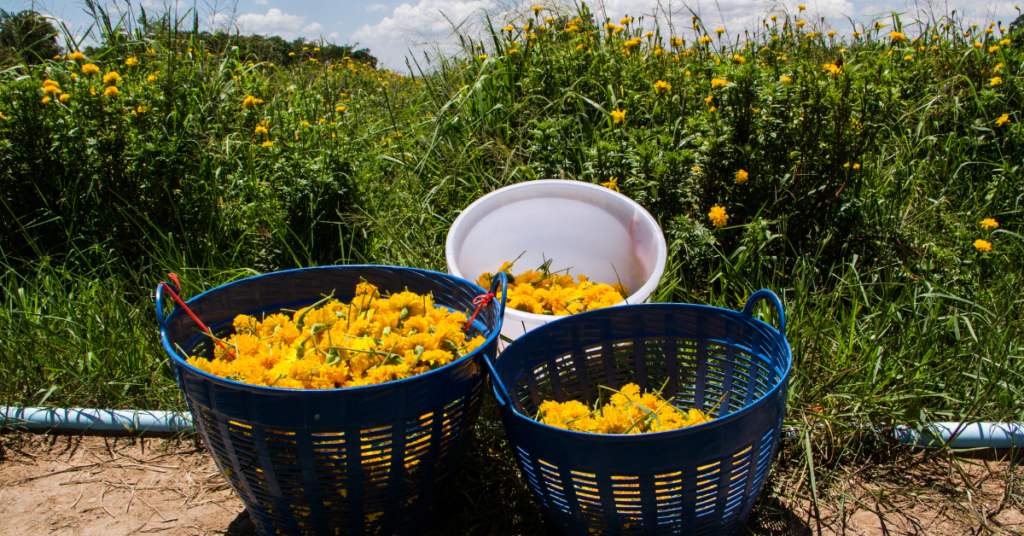
If you want to save marigold seeds for planting next season, it is important to harvest them at the right time.
Wait until the flowers have dried up and turned brown, then carefully remove the seed heads and place them in a paper bag to dry.
Once the seeds are dry, store them in an airtight container in a cool, dry place until you are ready to plant them.
Conclusion on Marigold
Marigolds are a popular and versatile flower that can add color and interest to any garden or landscape.
They are easy to grow and require minimal care, making them an excellent choice for beginning gardeners.
By planting marigolds in full sun, providing adequate water and nutrients, and deadheading spent flowers, you can encourage optimal bloom time and a profusion of flowers throughout the growing season.
With their bright colors, distinctive fragrance, and natural insect-repelling properties, marigolds are a great addition to any garden or landscape.

